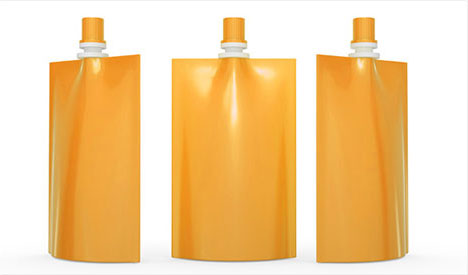Food should account for 75% of flexible packaging in 2015 according to a new market study by Smithers Pira . The study also projects that the demand for flexible packaging will grow by 3% a year to attain $248 Billion in 2020.
Consumer, vendor and retailer benefits
There are multiple reasons for flexible packaging’s popularity in the food industry : consumers like them because they are lightweight, and save space in the pantry since you can pack them together tightly. The resealable flexibles are also easy to open and close.
Vendors appreciate the significant reduction in packing size and weight, which allows significant cost savings in transportation: It is estimated that one truckload of flexible pouch containers would equate to over 15 truckloads of standard rigid containers. Flexibles also save significant warehouse space compared to their rigid equivalents.
Retailers like flexible packaging because you can display more of them on the shelf at a time, to potentially increase sales. They are also robust and less subject to breakages (so less time cleaning them up) and less returns.
Multilayer design advantages
Many advantages revolve around their multilayer designs. Multiple layers (up to 9 of them)can include flexible plastics and metallic foil. This helps increase shelf life compared to rigid packaging equivalents: The plastic encapsulates and the metallic foil acts as a heat and light shield. Freshness and ease of microwave heating can also be counted among the seemingly endless list of advantages.
Flexible packaging is also conducive to creativity in design: you can cover the entire surface of the product with print. Also, it is important to note that printing on such packaging is particularly well protected as it sits below a transparent polyfilm. The result is a product that can withstand a lot of rough treatment but still look good on the shelf.
Points to consider before switching to flexibles
If you’re considering moving from rigid to flexible packaging for one of your Food products, carefully consider your product’s weight and the retailer it is destined for. Will your product be easy to handle in a flexible package? Heavy flexible are somewhat awkward to handle. Is your product fragile? You may have to consider structural support around a flexible packaging, as it offers little support. If your product is liquid, know that flexible packaging usually takes longer to fill than traditional rigid bottles. Finally, although very robust, flexible packaging can be vulnerable to tearing and puncturing.
Of course we also recommend consulting with on of our experts to help you see the full picture and take advantage of a product type that will continue to evolve in sophistication and popularity, bringing even stronger advantages to food packaging.







